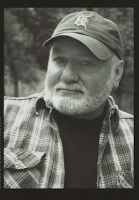First, I want to narrow the subject for today. Dale Andrews gave us an excellent article on the narrative voice referring to first person or third person, and Terence Faherty followed up with more great info on that subject.
That's not my topic.
We've all probably heard more than a life time's worth of discussion of passive voice and active voice.
That's not my topic.
 |
| Donald Graves 1930-2010 |
Another authority tells us that voice is the personality of writing while tone is the mood. Voice may affect word choice, sentence and story structure, even punctuation.
Since Graves introduced the term, writing instructors have prompted their students to, "Find your voice," just as so many of them insist, "Write about what you know." I differ with both of those. So far as writing about what you know, why not research and find out what you need to know to write about what you choose?
 |
| I believe a writer can have more than one best voice depending upon the subject. |
My response to "Find your voice" is that it's incomplete. I think it should be "Find your voice for the piece you're writing."
 |
| Ernest Hemingway |
Voice refers to the aspects that give the writing a personal flavor, and that personal flavor changes within a writer's works. Not only does the voice change depending upon the intended audience, it varies with the author's purpose to inform, entertain, or motivate readers to take action.
Writing to inform readers of the time and location of funeral services in an obituary does not require the same voice as the review of a book on etiquette, nor of a eulogy.
Mark Twain wrote frequently to entertain. His writing voice is well developed, but note the difference in the voice of Huckleberry Finn and The Adventures of Tom Sawyer.
 |
| Mark Twain |
Opening paragraph of Adventures of Huckleberry Finn:
You don't know about me, without you have read a book by the name of "The Adventures of Tom Sawyer," but that ain't no matter. That book was made by Mr. Mark Twain, and he told the truth, mainly. There was things which he stretched, but mainly he told the truth. That is nothing. I ain't never seen anybody but lied, one time or another, without it was Aunt Polly--Tom's Aunt Polly, she is--and Mary, and the Widow Douglas, is all told about in that book, which is mostly a true book, with some stretchers, as I said before.
Huck Finn uses atrocious grammar, breaks rules, and interrupts himself. All of these plus the choice of words enable us to hear and see the boy before the first paragraph is completed.
Opening of The Adventures of Tom Sawyer:
"TOM!"
No answer.
"TOM!"
No answer.
"What's gone with that boy, I wonder? You TOM!"
No answer.
The old lady pulled her spectacles down and looked over them about the room; then she put them up and looked out under them. She seldom or never looked THROUGH them for so small a thing as a boy; they were her state pair, the pride of her heart, and were built for "style," not service -- she could have seen through a pair of stove-lids just as well. She looked perplexed for a moment, and then said, not fiercely, but still loud enough for the furniture to hear:
"Well, I lay if I get hold of you I'll --"
She did not finish, for by this time she was bending down and punching under the bed with the broom, and so she needed breath to punctuate the punches with. She resurrected nothing but the cat.
The immediate difference noted is that Tom's adventures are told in third person, while Huck tells his own story in first person. The voice of both is Mark Twain, but he changes not just the person, but the vocabulary, correctness of grammar and punctuation, and structure of the pieces.
My personal definition of voice has become: The individual writing style of an author is a combination of idiotypical usage of syntax, diction, punctuation, character development and dialogue within a given body of text. The totality of that style is voice.  |
| A writer may change and further develop voice, but please don't ever lose it! |
One of the best explanations I've read of voice is that it's what Simon Cowell is talking about when he tells American Idol contestants to make the song their own and not just a note-for-note karaoke version.
What do you think about voice? How do you define it? Is your voice different for varying projects?
Until we meet again, take care of … you!








































